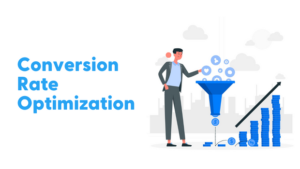Experiential marketing is a marketing strategy that focuses on creating immersive, interactive experiences for customers. It involves engaging customers in a way that allows them to personally interact with a brand, product, or service in a meaningful way.
Experiential marketing can take many forms, such as live events, product demonstrations, pop-up shops, and interactive installations. The goal of experiential marketing is to create a strong emotional connection with customers, rather than just selling a product or service.
Here are a Few Real-Life Examples of Experiential Marketing:
- Nike’s “Breaking2” event: In 2017, Nike hosted a live event called “Breaking2” in which three runners attempted to break the two-hour marathon barrier. The event was live-streamed on social media and featured interactive elements, such as a virtual reality experience and a social media hub.
- Red Bull’s “Red Bull Stratos” event: In 2012, Red Bull sponsored a live event called “Red Bull Stratos” in which skydiver Felix Baumgartner jumped from a helium balloon 24 miles above the Earth’s surface. The event was live-streamed on social media and featured interactive elements, such as a live Q&A with Baumgartner.
- Warby Parker’s pop-up shop tour: In 2013, eyewear retailer Warby Parker embarked on a pop-up shop tour that took the company to different cities across the United States. The pop-up shops featured interactive elements, such as a photo booth and a custom eyewear bar, and allowed customers to experience Warby Parker products in a physical retail setting.
- Google’s “The Wilderness Downtown” interactive music video: In 2010, Google created an interactive music video for the band Arcade Fire’s song “We Used to Wait.” The video allowed users to enter their childhood address and watch a personalized music video that incorporated Google Maps street view images of their neighborhood.
Also, read:
Types of Experiential Marketing
4 types of experiential marketing include:
- Live events: Companies such as Nike and Red Bull have used live events, such as concerts and sporting events, to create immersive experiences for customers and drive brand awareness.
- Product demonstrations: Companies such as Apple and Microsoft have used product demonstrations and workshops to allow customers to try out products in person and see how they work.
- Pop-up shops: Companies such as Warby Parker and Casper have used pop-up shops to allow customers to experience products in a physical retail setting and create a sense of exclusivity.
- Interactive installations: Companies such as Google and Samsung have used interactive installations and exhibits to engage customers in a more immersive way and create a memorable experience.
Overall, experiential marketing is a powerful tool for companies looking to create a strong emotional connection with their customers and drive brand loyalty. By creating immersive, interactive experiences, companies can engage customers in a way that goes beyond traditional marketing efforts and helps to create a lasting impression.
Five Benefits of Experiential Marketing
Five benefits to using experiential marketing:
- Increased brand awareness: Experiential marketing can help companies increase brand awareness by creating memorable experiences that customers are more likely to remember and share with others.
- Improved customer engagement: Experiential marketing allows companies to engage with customers in a more personal and meaningful way, which can improve customer loyalty and satisfaction.
- Greater customer loyalty: By creating positive and memorable experiences, companies can foster greater customer loyalty and encourage customers to continue doing business with them.
- Enhanced customer experiences: Experiential marketing allows companies to create personalized and immersive experiences that can improve the overall customer experience.
- Increased customer retention: By creating positive and memorable experiences, companies can improve customer retention and reduce churn.
How can eCommerce Brands Leverage Experiential Marketing
Combining with Influencer Marketing
Experiential marketing and influencer marketing are both effective strategies for eCommerce companies looking to engage with customers and drive business growth.
Experiential marketing involves creating immersive, interactive experiences for customers, while influencer marketing involves partnering with influencers to promote a brand or product to their followers. Both strategies can be used effectively by eCommerce brands to engage with customers and create memorable experiences.
Here are a few examples of how eCommerce companies can use experiential marketing and influencer marketing together:
- Virtual events: eCommerce companies can use virtual events, such as webinars or online workshops, to engage with customers and create immersive experiences. They can also partner with influencers to promote the event and encourage their followers to attend.
- Product demonstrations: eCommerce companies can use product demonstrations or unboxing videos to allow customers to see products in action and understand how they work. They can also partner with influencers to promote the demonstration and encourage their followers to try the product.
- Pop-up shops: eCommerce companies can use pop-up shops to allow customers to experience products in a physical retail setting and create a sense of exclusivity. They can also partner with influencers to promote the pop-up shop and encourage their followers to visit.
- Interactive installations: eCommerce companies can use interactive installations or exhibits to engage customers in a more immersive way and create a memorable experience. They can also partner with influencers to promote the installation and encourage their followers to visit.
Using a Data Warehouse
Consolidating data in a data warehouse can be a useful strategy for eCommerce companies looking to use experiential marketing to engage with customers. A data warehouse is a centralized repository of data that is used for analysis and reporting. By consolidating all of a company’s data in a data warehouse, it becomes easier to analyze and understand customer behavior and preferences, which can be useful for experiential marketing efforts.
For example, an eCommerce company could use data from a data warehouse to understand which products or marketing campaigns are the most popular and generate the most customer engagement. This information could then be used to inform experiential marketing strategies, such as virtual events or product demonstrations.
In addition, a data warehouse can help an eCommerce company better understand the customer journey and identify opportunities to improve the customer experience. For example, an eCommerce company could use data from a data warehouse to understand how customers interact with different channels (e.g. website, social media, email) and identify areas where the customer experience could be improved.
Also, read:
Can you do Experiential Marketing on a Limited Budget
It is possible to do experiential marketing on a low budget, although the specific strategies and tactics that are used may be more limited than those used in larger campaigns. Here are a few tips for doing experiential marketing on a low budget:
- Focus on a specific target audience: By targeting a specific audience, you can create more targeted and effective experiential marketing campaigns that are more likely to resonate with your target audience.
- Use social media and other online platforms: Social media and other online platforms, such as YouTube and Instagram, can be effective channels for experiential marketing on a low budget. These platforms can be used to create interactive experiences, such as live streams and virtual events, that are accessible to a wide audience.
- Partner with influencers: Partnering with influencers can be an effective way to promote experiential marketing campaigns on a low budget. Influencers can help to promote your campaign to their followers and drive awareness and engagement.
- Use guerrilla marketing tactics: Guerrilla marketing involves using unconventional tactics to promote a brand or product. Examples of guerrilla marketing tactics include flash mobs, street art, and surprise events. These tactics can be effective for experiential marketing on a low budget because they often require minimal resources and can create a lot of buzz.
It’s important to note that while experiential marketing can be done on a low budget, it can also require a significant investment, depending on the scope and scale of the campaign. In order to create a successful experiential marketing campaign, it’s important to carefully consider your budget and allocate resources wisely.
Here are a few additional tips for doing experiential marketing on a low budget:
- Start small and scale up: It’s often more effective to start with a small, targeted experiential marketing campaign and then scale up as needed. This can help you test different strategies and tactics without committing a large budget upfront.
- Use existing resources: Instead of creating new resources from scratch, consider using existing resources, such as social media accounts, email lists, and physical locations, to promote your experiential marketing campaign.
- Leverage user-generated content: User-generated content, such as social media posts, reviews, and ratings, can be an effective way to promote an experiential marketing campaign on a low budget. Encourage customers to share their experiences with your brand to create buzz and drive engagement.
- Focus on creating a memorable experience: While a large budget can be useful for creating elaborate experiential marketing campaigns, it’s important to remember that the most effective campaigns often focus on creating a memorable experience for customers. By focusing on creating a unique and memorable experience, you can create a strong emotional connection with your customers and drive business growth.
Conclusion
In today’s market, experiential marketing and social commerce have become increasingly important for businesses. However, measuring success and allocating budgets for these initiatives can be challenging without accurate data. To overcome this challenge, Saras can implement a modern data stack to provide the foundation for growth analytics. With this data-driven approach, businesses can better understand their most profitable customers and develop strategies to attract, convert, and retain them. This will ultimately lead to more successful marketing initiatives and a stronger bottom line.












